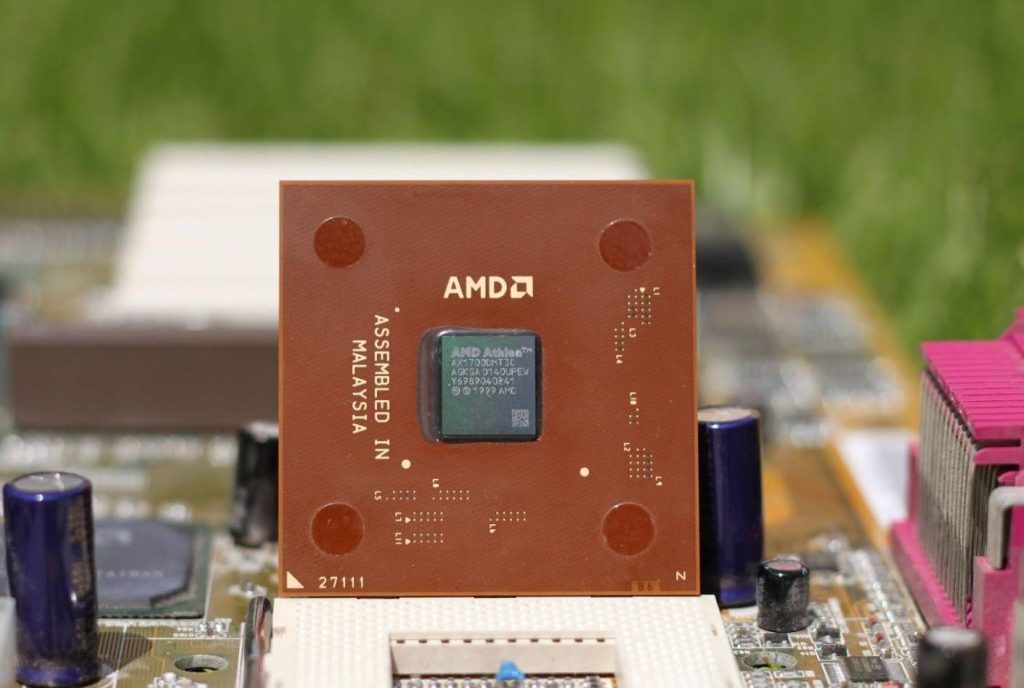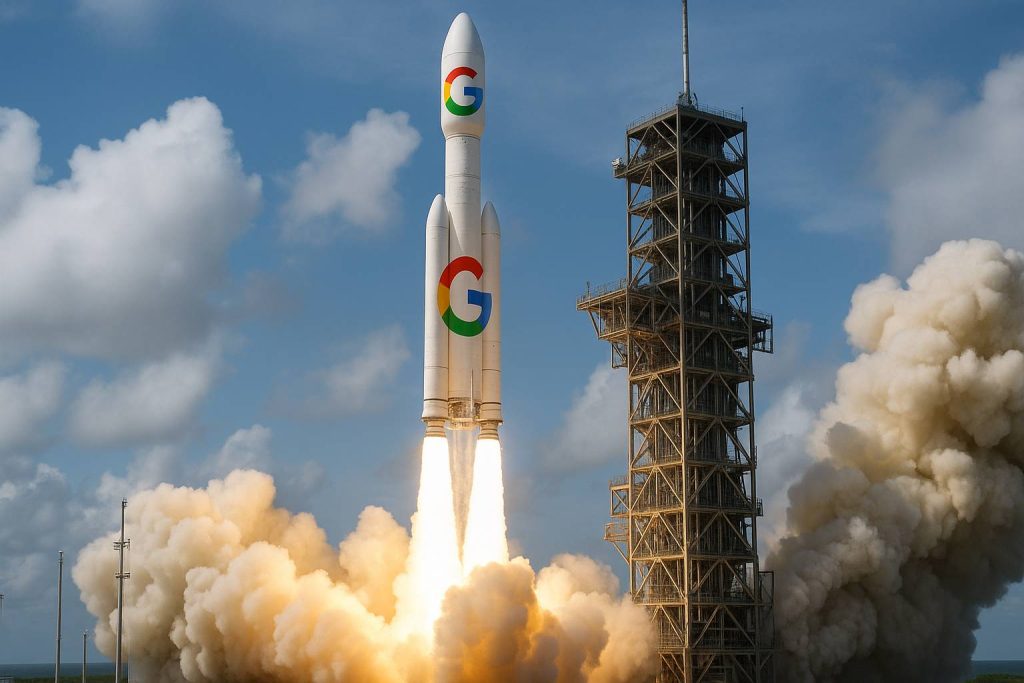AMD Stock Rocket 35% Surge Matters to Investors and Portfolio Strategy
The partnership announcement showcased the continued challenges facing traditional semiconductor sector investments, with technology hardware companies representing an increasingly volatile portion of equity portfolios during periods of artificial intelligence spending uncertainty and competitive landscape transformations. This trend reinforces why prudent investors require portfolio diversification that includes assets uncorrelated with semiconductor sector performance cycles, providing stability during industry-wide valuation swings while maintaining exposure to appreciation potential through scarcity-driven alternative investments.
This Article Covers:
- How AMD’s 35% single-day stock surge demonstrates semiconductor sector volatility risks
- Why traditional chip manufacturers face structural challenges from AI infrastructure competition
- The concentration risks created by technology sector exposure in investment portfolios
- How collector car investments provide diversification from semiconductor sector performance cycles
- Why MCQ Markets offers accessible entry points to tangible assets that operate independently of technology sector dynamics
AMD Partnership Announcement: Semiconductor Sector Volatility and Portfolio Implications
The multibillion-dollar agreement included commitments to supply upward of 6 gigawatts of GPU computing capacity beginning with MI450 chips in the second half of 2026, with AMD CFO Jean Hu projecting the deal would deliver tens of billions of dollars in revenue while proving highly accretive to non-GAAP earnings per share. The announcement triggered immediate market reaction, with AMD shares soaring as high as 38% during intraday trading before settling at a 27.65% gain, marking the chipmaker’s largest single-day rally in nearly a decade.
The partnership structure demonstrated the scale of competitive pressures facing semiconductor companies in 2025. OpenAI’s warrant agreement for up to 160 million AMD shares included milestone-based vesting tranches, with the first tranche vesting upon initial 1 gigawatt deployment and the final tranche requiring AMD stock to reach $600 per share (compared to Friday’s $164.67 close). This equity-compensation structure reflected OpenAI’s strategy to secure long-term chip supply commitments while maintaining flexibility across multiple semiconductor suppliers, reducing concentration risk in its own AI infrastructure buildout plans.
Market analysts noted the announcement reflected broader competitive dynamics affecting the semiconductor industry. The AMD partnership came just weeks after rival Nvidia announced a $100 billion investment commitment to OpenAI, demonstrating how AI infrastructure companies leveraged competing chip manufacturers against each other to secure favorable pricing and capacity guarantees. Additionally, OpenAI had signed a $300 billion cloud equipment agreement with Oracle in September 2025, highlighting the massive capital commitments flowing into AI infrastructure development and the intense competition for data center capacity allocation.
AI bubble speculation represented an additional concern for semiconductor sector investors. According to statements from Amazon founder Jeff Bezos during Italian Tech Week, the massive influx of spending on AI projects and Wall Street’s enormous investments raised legitimate concerns about market overvaluation, even as AI technologies promised to deliver long-term benefits to industries and consumers globally. This bubble speculation created uncertainty about whether current semiconductor sector valuations accurately reflected sustainable earnings potential or represented speculative positioning ahead of potential market corrections.
The partnership announcement highlighted fundamental questions about semiconductor sector investment stability. AMD’s stock had significantly underperformed rival Nvidia over the prior twelve months, rising just 1% compared to Nvidia’s 52% gain, though AMD shares had climbed 75% over the six months preceding the OpenAI announcement compared to Nvidia’s 84% advance. These performance disparities demonstrated how individual semiconductor companies experienced dramatically different valuation trajectories based on partnership announcements, competitive positioning perceptions, and AI infrastructure market share expectations.
Semiconductor Sector Concentration: Portfolio Risk Management for Technology-Heavy Investors
Semiconductor sector concentration has created significant portfolio challenges across multiple dimensions. The sector’s sensitivity to AI infrastructure spending fluctuations, data center capacity buildout timelines, competitive positioning shifts, and bubble speculation creates interconnected risk factors that simultaneously affect multiple portfolio holdings. When major chip manufacturers announce transformative partnership agreements or experience competitive setbacks, the market impact extends across GPU producers, foundry operators, semiconductor equipment manufacturers, and technology service companies that share similar dependencies on AI infrastructure investment continuation.
The concentration pattern extends beyond stock performance into broader economic vulnerabilities. Traditional semiconductor companies depend on capital equipment procurement cycles, manufacturing capacity constraints, and customer concentration risks that collectively influence sector performance through supply-side bottlenecks and demand-side uncertainties. When AMD announces major partnership agreements that trigger 35% intraday stock surges, the market implications affect competing chipmakers, fabrication facilities, and technology infrastructure companies simultaneously, creating correlated volatility across interconnected industry participants.
The implications for sophisticated investors are substantial. While semiconductor investments have historically provided exposure to secular technology trends and innovation-driven growth, the sector’s vulnerability to AI bubble speculation and partnership-driven valuation swings creates portfolio challenges that become more pronounced as concentration percentages increase. Financial advisors increasingly warn that when technology hardware holdings exceed meaningful portfolio percentages, the systematic exposure to semiconductor sector volatility requires alternative asset allocation strategies that operate independently of AI infrastructure spending patterns and chip manufacturer competitive dynamics.
Investment professionals increasingly recommend alternative asset allocation approaches that reduce correlation with semiconductor sector performance cycles, particularly for clients whose existing wealth derives from technology, hardware manufacturing, or AI infrastructure investments. The collector car market represents one such alternative, offering appreciation potential completely divorced from partnership announcements, AI bubble speculation, or GPU capacity allocation decisions that drive semiconductor sector valuations.
Alternative Investment Strategy: Collector Cars as Technology-Independent Assets
Investment-grade collector automobiles provide critical portfolio benefits during semiconductor sector volatility:
Technology Cycle Independence: Collector car values are evaluated based on automotive heritage, production scarcity, and historical significance rather than AI infrastructure partnership announcements, GPU capacity allocation decisions, or semiconductor competitive positioning shifts that drive technology sector valuations and create concentration risks.
AI Spending Isolation: Physical automotive assets maintain tangible value regardless of artificial intelligence bubble speculation, data center capacity buildout timelines, or chip manufacturer partnership dynamics that affect semiconductor producers, foundry operators, and technology infrastructure sector performance.
Correlation Benefits: Classic Ferrari, Lamborghini, and McLaren appreciation operates completely independently of technology sector market dynamics, providing genuine portfolio diversification during periods when semiconductor concentration creates systematic risk exposure across multiple chip manufacturers and AI infrastructure business categories.
MCQ Markets: Fractional Access to Technology-Independent Investment-Grade Automobiles
While semiconductor investors navigate partnership announcement volatility and AI bubble speculation, MCQ Markets provides sophisticated investors with accessible entry points to collector car investments that appreciate completely independent of technology sector performance or AI infrastructure spending cycles. Our fractional ownership platform democratizes access to investment-grade automobiles whose values derive from automotive craftsmanship, racing heritage, and production scarcity rather than GPU capacity metrics that create semiconductor portfolio concentration risks.
The collector car market’s independence from technology sector dynamics makes it particularly valuable for investors seeking portfolio diversification during periods of AI-driven valuation volatility. While chip manufacturers experience dramatic stock price movements based on partnership announcements and competitive positioning shifts, investment-grade collector cars continue appreciating based on factors completely divorced from semiconductor sector performance or artificial intelligence spending patterns.
MCQ Markets specializes in sourcing investment-grade vehicles that represent the pinnacle of automotive engineering and collector market desirability. Our platform provides technology-exposed investors with access to meticulously selected automobiles including limited-production hypercars with documented racing provenance, historically significant models from legendary manufacturers like Ferrari and Lamborghini, and ultra-rare examples that combine motorsports heritage with investment-grade collectibility and market liquidity.
The platform’s fractional ownership model eliminates capital barriers that traditionally restricted collector car investment to ultra-high-net-worth individuals. Starting with accessible entry points, investors can build diversified automotive portfolios across multiple manufacturers, production eras, and collector market segments without requiring full vehicle acquisition capital. This democratized access enables portfolio construction strategies that spread concentration risk across different automotive categories while maintaining professional asset management, secure storage, and comprehensive insurance coverage.
MCQ Markets leverages deep industry relationships and motorsports expertise to source exceptional acquisition opportunities that individual investors typically cannot access independently. Our team’s connections within the global collector car community, racing organizations, and automotive authentication specialists ensure platform participants benefit from institutional-quality asset selection, comprehensive due diligence processes, and transparent market valuation methodologies that protect investment quality and portfolio positioning.
The collector car market has demonstrated consistent long-term appreciation that operates independently of technology sector performance cycles. Research from Knight Frank indicates collector car indices have delivered 185% overall appreciation over the past decade, outperforming traditional equities, real estate, and alternative asset categories while maintaining low correlation with stock market volatility. This performance history demonstrates the asset class’s credibility as a legitimate portfolio diversification tool rather than simply a luxury consumption category.
MCQ Markets provides semiconductor-exposed investors with complete independence from AI infrastructure spending uncertainties, partnership announcement volatility, and chip manufacturer competitive dynamics that create technology sector systematic risks. Collector car appreciation remains unaffected by GPU capacity allocation decisions, data center buildout timelines, or artificial intelligence bubble speculation, offering genuine portfolio stability during periods of semiconductor sector transformation and technology valuation uncertainty.
Investment Outlook: Navigating Semiconductor Volatility Through Alternative Asset Allocation
AMD’s 35% stock surge following its OpenAI partnership announcement, coupled with ongoing AI bubble speculation and competitive dynamics among chip manufacturers, created valuable insights for investors managing portfolio concentration risks in technology and semiconductor sectors. The partnership’s scale and market reaction demonstrate why building resilient portfolios requires assets that maintain value regardless of AI infrastructure spending patterns or semiconductor sector partnership announcement volatility.
This semiconductor sector volatility reinforces fundamental investment principles about diversification and systematic risk management. When chip manufacturers announce transformative partnerships that trigger explosive single-day stock surges exceeding 35%, the importance of uncorrelated asset classes becomes paramount for portfolio stability and long-term wealth preservation strategies during industry-wide competitive transformation periods.
The AMD partnership announcement affected valuations across semiconductor manufacturers and technology infrastructure companies, demonstrating how AI-driven competitive dynamics create broad-based impacts that extend beyond individual companies to entire chip manufacturing and data center infrastructure industry categories. This systematic risk highlights the importance of alternative asset allocation that operates independently of partnership announcements, GPU capacity metrics, and artificial intelligence spending pattern dynamics.
MCQ Markets addresses this diversification need by providing institutional-quality access to collector car investments through our proven fractional ownership platform. Our investment structure allows technology-exposed investors to build positions in investment-grade automobiles while maintaining professional management during semiconductor sector partnership volatility periods.
As AMD begins deploying GPU capacity under its OpenAI agreement and semiconductor companies continue competing for AI infrastructure market share, collector car investments continue operating in markets driven by automotive heritage and manufacturing scarcity rather than technology sector dynamics. This fundamental independence makes investment-grade automobiles particularly valuable for investors seeking portfolio stability during periods of semiconductor sector partnership-driven volatility and AI bubble speculation uncertainty.





